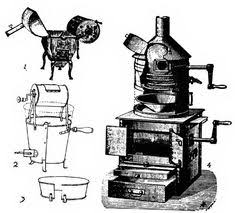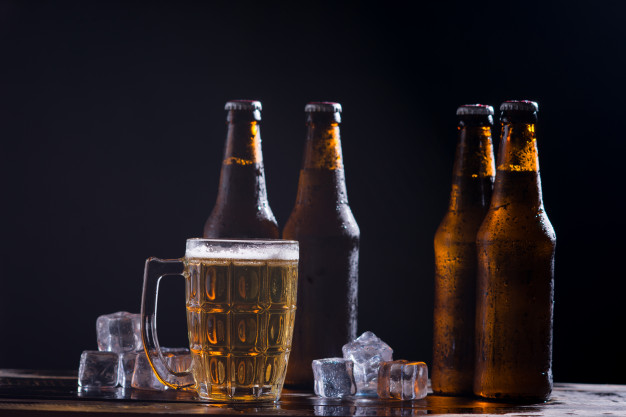
Beer, is one of the most consumed liquid on the planet. but, how much do we know about its origin? The word beer comes from old Germanic languages, and is with variations used in continental Germanic languages, bier in German and Dutch, but not in Nordic languages. The word was imported into the British Isles by tribes such as the Saxons. It is disputed where the word originally comes from.
As almost any cereal containing certain sugars can undergo spontaneous fermentation due to wild yeasts in the air, it is possible that beer-like drinks were independently developed throughout the world soon after a tribe or culture had domesticated cereal. Chemical tests of ancient pottery jars reveal that beer was produced about 3,500 BC in what is today Iran, and was one of the first-known biological engineering tasks where the biological process of fermentation is used.
Also, archaeological findings show that Chinese villagers were brewing fermented alcoholic drinks as far back as 7000 BC on small and individual scale, with the production process and methods similar to that of ancient Egypt and ancient Mesopotamia.

The earliest archaeological evidence of fermentation consists of 13,000-year-old residues of a beer with the consistency of gruel, used by the semi-nomadic Natufians for ritual feasting, at the Raqefet Cave in the Carmel Mountains near Haifa in Israel.
In Mesopotamia (ancient Iraq), early evidence of beer is a 3,900-year-old Sumerian poem honoring Ninkasi, the patron goddess of brewing, which contains the oldest surviving beer recipe, describing the production of beer from barley via bread. Approximately 5,000 years ago, workers in the city of Uruk were paid by their employers in beer.
Beer became vital to all the grain-growing civilizations of Eurasian and North African antiquity, including Egypt—so much so that in 1868 James Death put forward a theory in The Beer of the Bible that the manna from heaven that God gave the Israelites was a bread-based, porridge-like beer called wusa.
These beers were often thick, more of a gruel than a drink, and drinking straws were used by the Sumerians to avoid the bitter solids left over from fermentation. Though beer was drunk in Ancient Rome, it was replaced in popularity by wine
In ancient Mesopotamia, clay tablets indicate that the majority of brewers were probably women, and that brewing was a fairly well respected occupation during the time, being the only profession in Mesopotamia which derived social sanction and divine protection from female deities/goddesses, specifically: Ninkasi, who covered the production of beer, Siris, who was used in a metonymic way to refer to beer, and Siduri, who covered the enjoyment of beer.

Mesopotamian brewing appears to have incorporated the usage of twice-baked barley bread called bappir, which was exclusively used for brewing beer. It was discovered early that reusing the same container for fermenting the mash would produce more reliable results; brewers on the move carried their tubs with them.

Beer was part of the daily diet of Egyptian pharaohs over 5,000 years ago. Then, it was made from baked barley bread, and was also used in religious practices. During the building of the Great Pyramids in Giza, Egypt, each worker got a daily ration of four to five liters of beer, which served as both nutrition and refreshment that was crucial to the pyramids’ construction.

The Hydrometer Transformed How Beer Was Brewed.
Following significant improvements in the efficiency of the steam engine in 1765, industrialization of beer became a reality. Further innovations in the brewing process came about with the introduction of the thermometer in 1760 and hydrometer in 1770, which allowed brewers to increase efficiency and attenuation.

In general, none of these early malts would have been well shielded from the smoke involved in the kilning process, and consequently, early beers would have had a smoky component to their flavors; evidence indicates that maltsters and brewers constantly tried to minimize the smokiness of the finished beer.
Writers of the period describe the distinctive taste derived from wood-smoked malts, and the almost universal revulsion it engendered. The smoked beers and ales of the West Country were famous for being undrinkable – locals and the desperate accepted though.

Before its introduction beers were brewed from single malt: brown beers from brown malt, amber beers from amber malt, pale beers from pale malt. Using the hydrometer, brewers could calculate the yield from different malts. They observed that pale malt, though more expensive, yielded far more fermentable material than cheaper malts.

For example, brown malt (used for Porter) gave 54 pounds of extract per quarter, whilst pale malt gave 80 pounds. Once this was known, brewers switched to using mostly pale malt for all beers, supplemented with a small quantity of highly coloured malt to achieve the correct colour for darker beers.
The invention of the drum roaster in 1817 by Daniel Wheeler allowed for the creation of very dark, roasted malts, contributing to the flavour of porters and stouts.

Its development was prompted by a British law of 1816 forbidding the use of any ingredients other than malt and hops. Porter brewers, employing predominantly pale malt grist, urgently needed a legal colourant. Wheeler’s patent malt was the solution.
Louis Pasteur’s 1857 discovery of yeast’s role in fermentation led to brewers developing methods to prevent the souring of beer by undesirable microorganisms.
In 1912, the use of brown bottles began to be used by Joseph Schlitz Brewing Company of Milwaukee, Wisconsin in the United States. This innovation has since been accepted worldwide and prevents harmful rays from destroying the quality and stability of beer

Many European nations have unbroken brewing traditions dating back to the earliest historical records. Beer is an especially important drink in countries such as Belgium, Germany, Austria, Ireland, the UK (England, Wales, and Scotland), France, the Scandinavian countries, Poland, the Czech Republic, Spain and others having strong and unique brewing traditions with their own history, characteristic brewing methods, and styles of beer.
Modern breweries now brew many types of beer, ranging from ancient styles such as the spontaneously-fermented lambics of Belgium; the lagers, dark beers, wheat beers and more of Germany; the UK’s stouts, milds, pale ales, bitters, golden ale and new modern American creations such as chili beer, cream ale, and double India pale ales.
Today, the brewing industry is a huge global business, consisting of several multinational companies, and many thousands of smaller producers ranging from brewpubs to regional breweries. Advances in refrigeration, international and transcontinental shipping, marketing and commerce have resulted in an international marketplace, where the consumer has literally hundreds of choices between various styles of local, regional, national and foreign beers.
More than 133 billion liters (35 billion gallons) are sold per year—producing total global revenues of $294.5 billion (£147.7 billion) in 2006.
It might also interest you to know that the title for biggest beer-consuming country goes to Czech Republic.
